Table of Contents
Guide
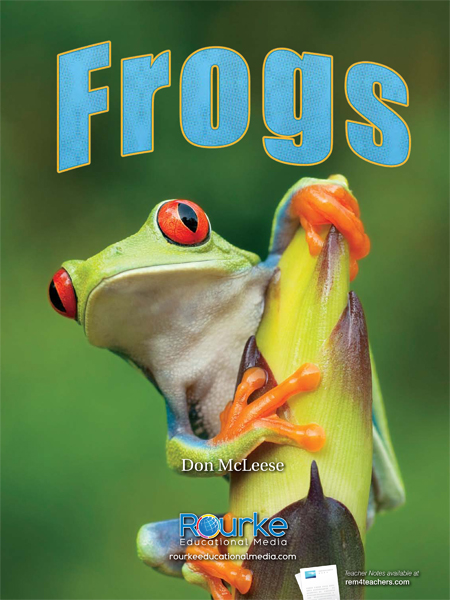
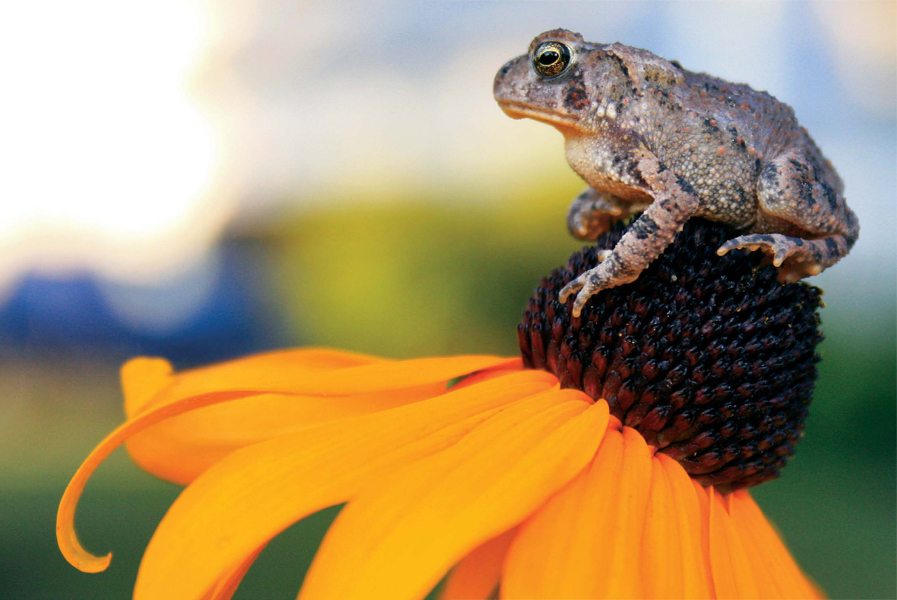
2013 Rourke Educational Media All rights reserved. No part of this book may be reproduced or utilized in any form or by any means, electronic or mechanical including photocopying, recording, or by any information storage and retrieval system without permission in writing from the publisher. www.rourkeeducationalmedia.com PHOTO CREDITS: : Donald Bowers; Edited by Precious McKenzie Cover Design by Renee Brady
Interior Design by Cory Davis Library of Congress PCN Data Frogs / Don McLeese
(Eye to Eye with Animals)
ISBN 978-1-61810-113-6 (hard cover) (alk. paper)
ISBN 978-1-61810-246-1 (soft cover)
Library of Congress Control Number: 2011944396 Rourke Educational Media
Printed in the United States of America,
North Mankato, Minnesota
 rourkeeducationalmedia.com
rourkeeducationalmedia.com PO Box 643328 Vero Beach, Florida 32964
Chapter 1
Double Lives
Have you ever imagined what it would be like to lead a double life? If you were a frog you could! Frogs are members of the animal group classified as .
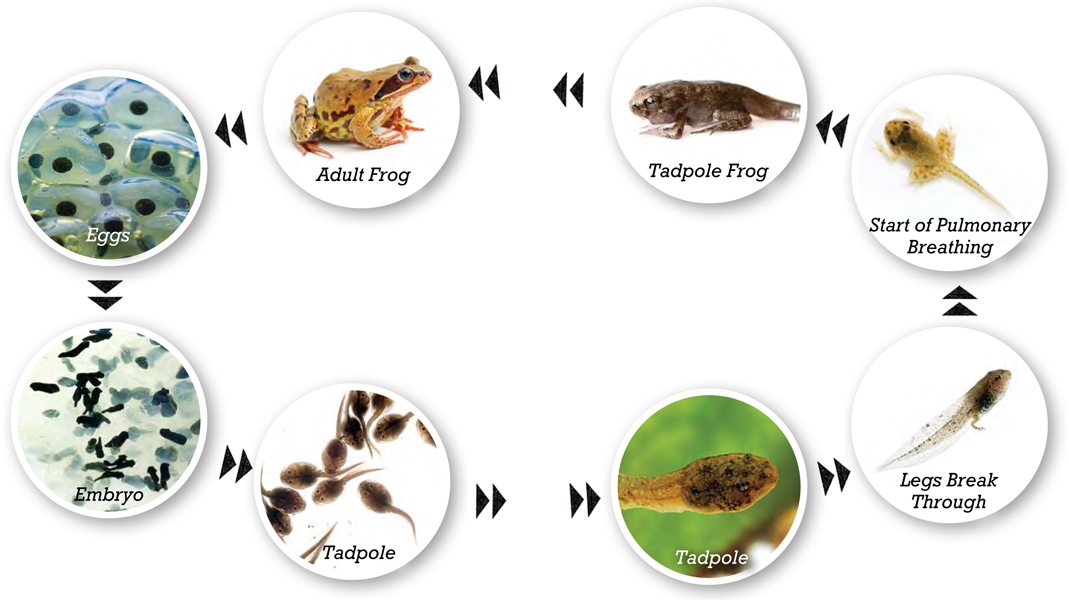
Some tadpoles are so small they are hard to see, although others may be six or seven inches (13-18 centimeters) long. Tadpoles live in the water, and they have long tails to help them swim.
They eat plants, but some of them eat frog eggs or even other tadpoles!  It takes about 12 to 16 weeks for a tadpole to become a frog. A number of things change during that time. It grows legs. It develops which allows it to eat insects, worms, and small animals. Eventually, it loses its tail. Most frogs begin their lives as water animals but then become land animals.
It takes about 12 to 16 weeks for a tadpole to become a frog. A number of things change during that time. It grows legs. It develops which allows it to eat insects, worms, and small animals. Eventually, it loses its tail. Most frogs begin their lives as water animals but then become land animals.
They look very different as frogs than they did as tadpoles. On their own, they generally live six to eight years. Many of them die when they are eaten by bigger, stronger animals. 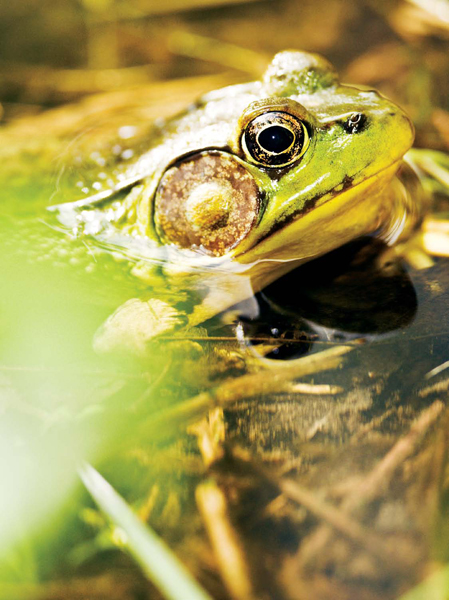 Frogs that are pets can live twice as long as frogs in the wild because there arent predators around to eat them.
Frogs that are pets can live twice as long as frogs in the wild because there arent predators around to eat them.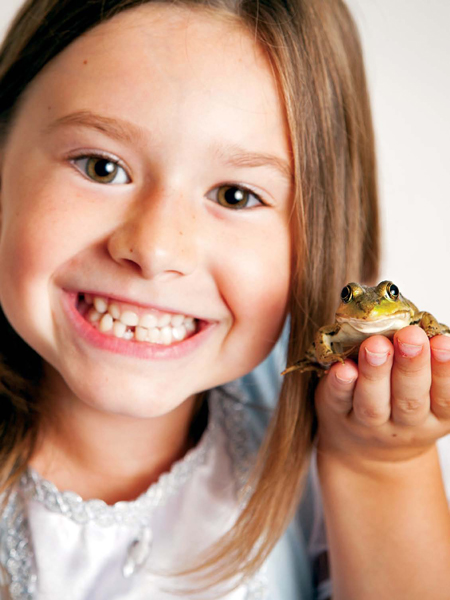
Chapter 2
The World of Frogs
Frogs are found practically everywhere in the world, except in places like Antarctica where it is very cold. Most move from water to land as they develop from tadpoles into frogs.
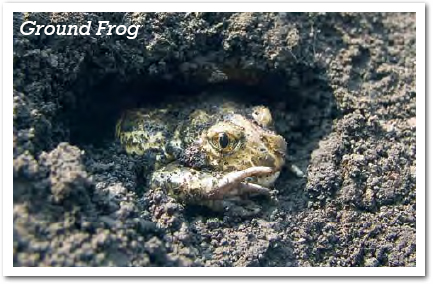
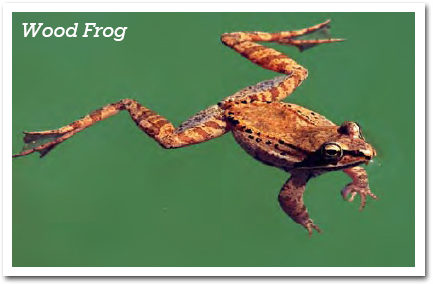
FUN FACT The wood frog can live with 65% of its body frozen.


FUN FACT The wood frog can live with 65% of its body frozen.
Scientists discovered that its glucose centers around its vital organs, protecting organs even though the rest of its body could be frozen solid. 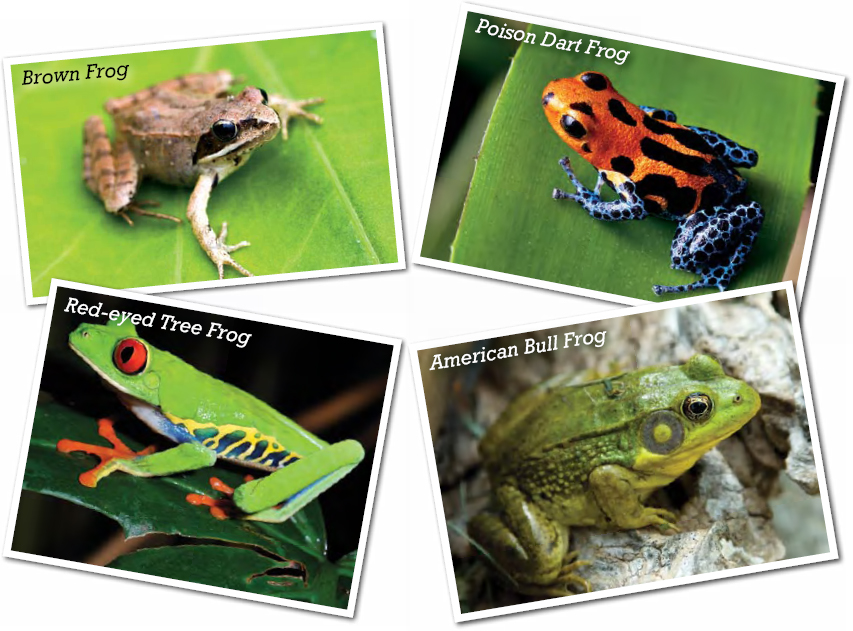 Scientists believe that frogs have been around for 180 million years! Over that time, frogs have developed into almost 5,000 different species. Every species is a little different, but most frogs have a lot of things in common. Frogs typically have short bodies and no tails. The tail disappears after the tadpole stage. Their feet are .
Scientists believe that frogs have been around for 180 million years! Over that time, frogs have developed into almost 5,000 different species. Every species is a little different, but most frogs have a lot of things in common. Frogs typically have short bodies and no tails. The tail disappears after the tadpole stage. Their feet are .
Most of them are green or brown, or some combination of the colors, to blend in with the ground, grass, and trees in areas where they live. Others have bright colors and patterns. Frogs, and all amphibians, are with a body temperature that stays the same inside, no matter how hot or cold it is. 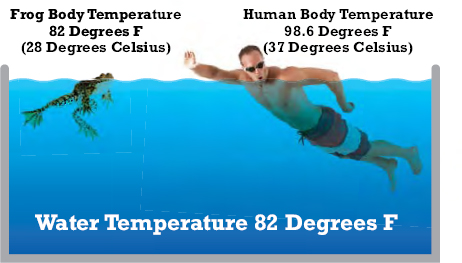 Frogs are very good jumpers, with strong legs. And, they have big eyes that stick out from the front and sides of their head.
Frogs are very good jumpers, with strong legs. And, they have big eyes that stick out from the front and sides of their head. 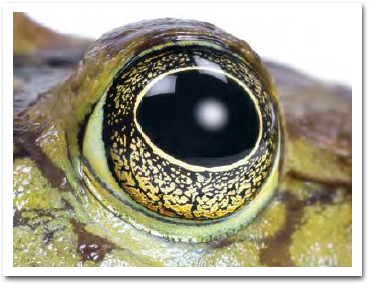 Their good eyesight helps them find food and avoid other animals that like to eat frogs! Did You Know? Scientists think frogs were the very first land animals with vocal cords.
Their good eyesight helps them find food and avoid other animals that like to eat frogs! Did You Know? Scientists think frogs were the very first land animals with vocal cords.  Their good eyesight helps them find food and avoid other animals that like to eat frogs! Did You Know? Scientists think frogs were the very first land animals with vocal cords.
Their good eyesight helps them find food and avoid other animals that like to eat frogs! Did You Know? Scientists think frogs were the very first land animals with vocal cords.
Guess what? Only the male frogs make sounds.  Most frogs eat other animals, insects, and worms rather than plants which means that they are , sounding like RIB-bit in a raspy, lower tone. Some frogs make sounds like a chirp. Among the frogs that live in the United States, the largest is the . It can be eight inches (20 centimeters) long. Bullfrogs are great jumpers.
Most frogs eat other animals, insects, and worms rather than plants which means that they are , sounding like RIB-bit in a raspy, lower tone. Some frogs make sounds like a chirp. Among the frogs that live in the United States, the largest is the . It can be eight inches (20 centimeters) long. Bullfrogs are great jumpers.
They can jump as far as six feet (1.8 meters)! And, bullfrogs eat practically anything they can swallow, including insects, fish, turtles, and other frogs. 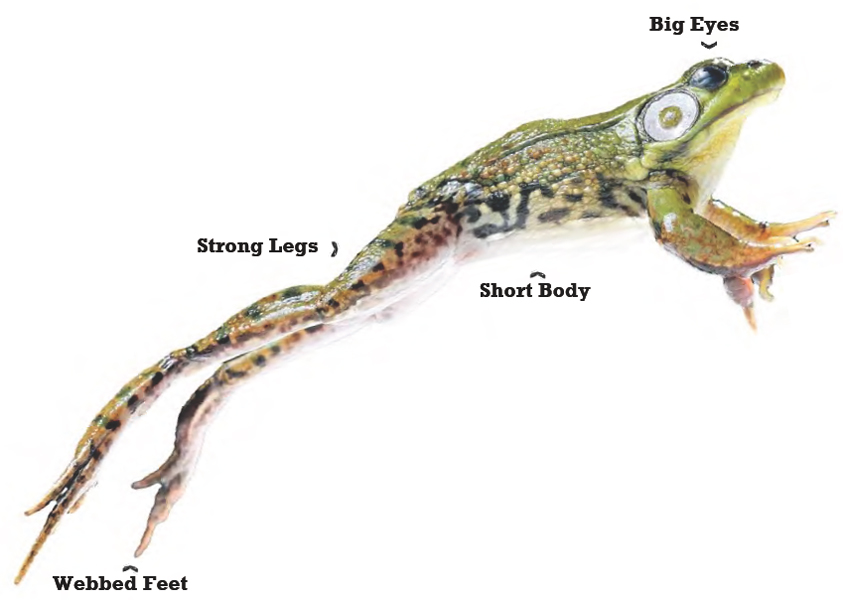
Chapter 3
Frogs and Toads
Many people get confused about the differences between frogs and , and they are skinnier than toads. They also have bigger eyes. Frogs are better jumpers, and they usually live near the water.
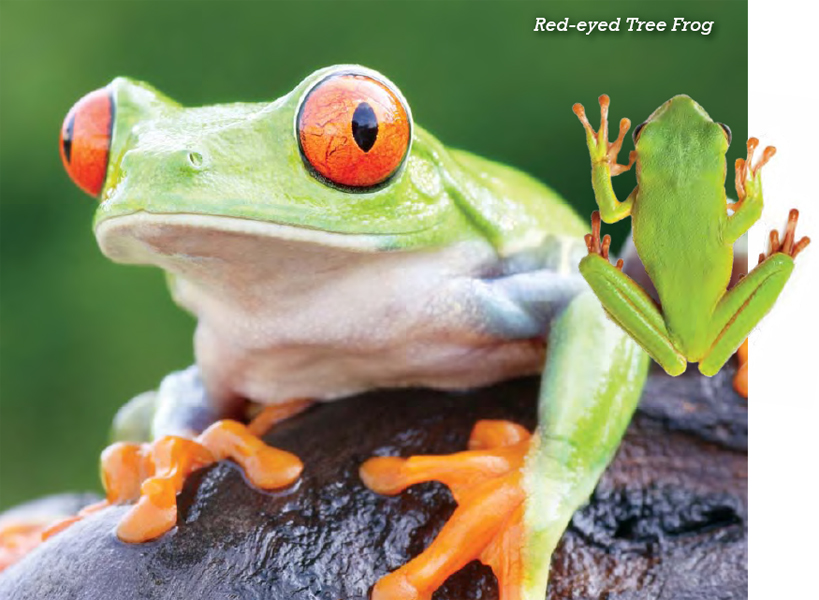
Toads have rougher, bumpier skin, a wider body, and they dont need to live near water. They run or hop rather than take big jumps.
Toads have a different cartilage system in their bodies than frogs. Even the way they lay eggs is different. Many toads lay eggs in a long chain or even give birth to live young! 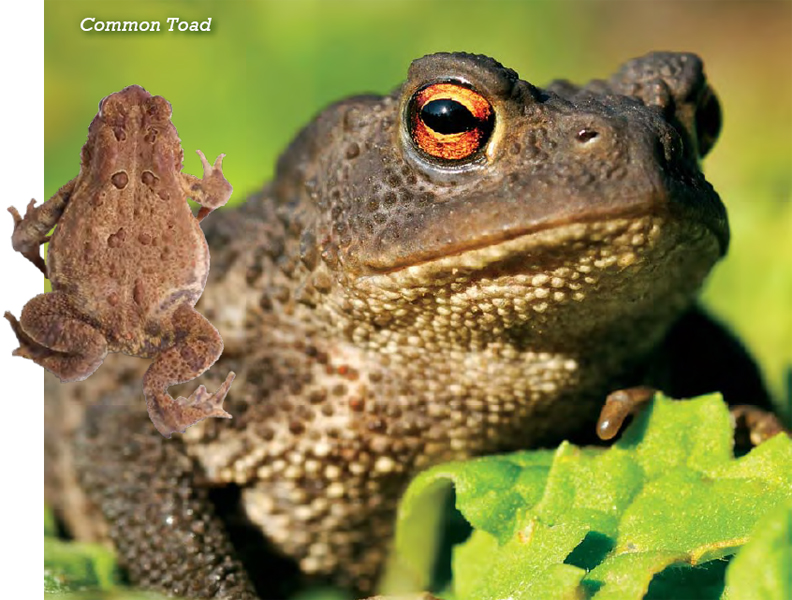

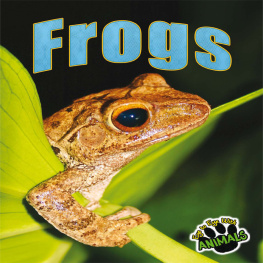
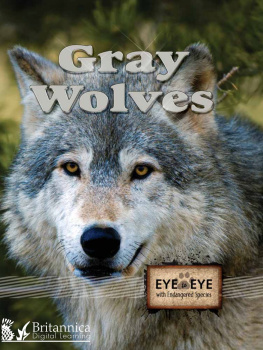

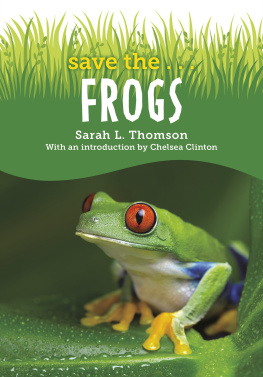
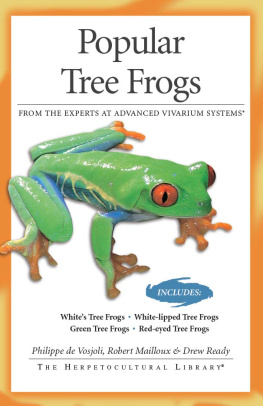

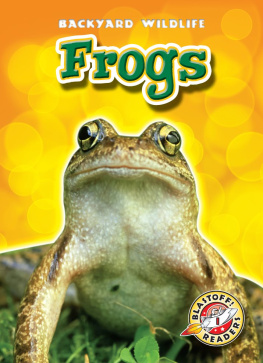


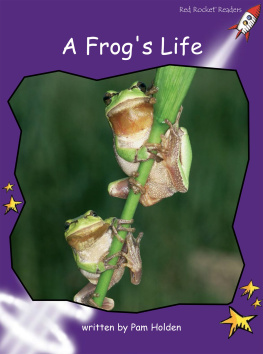
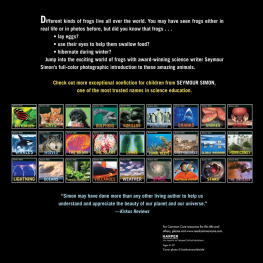
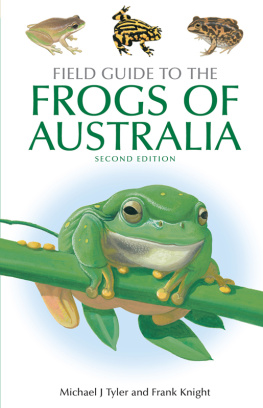
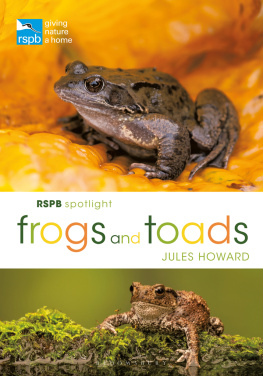
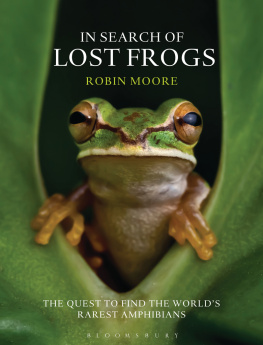


 2013 Rourke Educational Media All rights reserved. No part of this book may be reproduced or utilized in any form or by any means, electronic or mechanical including photocopying, recording, or by any information storage and retrieval system without permission in writing from the publisher. www.rourkeeducationalmedia.com PHOTO CREDITS: : Donald Bowers; Edited by Precious McKenzie Cover Design by Renee Brady
2013 Rourke Educational Media All rights reserved. No part of this book may be reproduced or utilized in any form or by any means, electronic or mechanical including photocopying, recording, or by any information storage and retrieval system without permission in writing from the publisher. www.rourkeeducationalmedia.com PHOTO CREDITS: : Donald Bowers; Edited by Precious McKenzie Cover Design by Renee Brady rourkeeducationalmedia.com PO Box 643328 Vero Beach, Florida 32964
rourkeeducationalmedia.com PO Box 643328 Vero Beach, Florida 32964  Some tadpoles are so small they are hard to see, although others may be six or seven inches (13-18 centimeters) long. Tadpoles live in the water, and they have long tails to help them swim.
Some tadpoles are so small they are hard to see, although others may be six or seven inches (13-18 centimeters) long. Tadpoles live in the water, and they have long tails to help them swim.  It takes about 12 to 16 weeks for a tadpole to become a frog. A number of things change during that time. It grows legs. It develops which allows it to eat insects, worms, and small animals. Eventually, it loses its tail. Most frogs begin their lives as water animals but then become land animals.
It takes about 12 to 16 weeks for a tadpole to become a frog. A number of things change during that time. It grows legs. It develops which allows it to eat insects, worms, and small animals. Eventually, it loses its tail. Most frogs begin their lives as water animals but then become land animals. Frogs that are pets can live twice as long as frogs in the wild because there arent predators around to eat them.
Frogs that are pets can live twice as long as frogs in the wild because there arent predators around to eat them.

 FUN FACT The wood frog can live with 65% of its body frozen.
FUN FACT The wood frog can live with 65% of its body frozen.  Scientists believe that frogs have been around for 180 million years! Over that time, frogs have developed into almost 5,000 different species. Every species is a little different, but most frogs have a lot of things in common. Frogs typically have short bodies and no tails. The tail disappears after the tadpole stage. Their feet are .
Scientists believe that frogs have been around for 180 million years! Over that time, frogs have developed into almost 5,000 different species. Every species is a little different, but most frogs have a lot of things in common. Frogs typically have short bodies and no tails. The tail disappears after the tadpole stage. Their feet are . Frogs are very good jumpers, with strong legs. And, they have big eyes that stick out from the front and sides of their head.
Frogs are very good jumpers, with strong legs. And, they have big eyes that stick out from the front and sides of their head.  Their good eyesight helps them find food and avoid other animals that like to eat frogs! Did You Know? Scientists think frogs were the very first land animals with vocal cords.
Their good eyesight helps them find food and avoid other animals that like to eat frogs! Did You Know? Scientists think frogs were the very first land animals with vocal cords.  Most frogs eat other animals, insects, and worms rather than plants which means that they are , sounding like RIB-bit in a raspy, lower tone. Some frogs make sounds like a chirp. Among the frogs that live in the United States, the largest is the . It can be eight inches (20 centimeters) long. Bullfrogs are great jumpers.
Most frogs eat other animals, insects, and worms rather than plants which means that they are , sounding like RIB-bit in a raspy, lower tone. Some frogs make sounds like a chirp. Among the frogs that live in the United States, the largest is the . It can be eight inches (20 centimeters) long. Bullfrogs are great jumpers.
 Toads have rougher, bumpier skin, a wider body, and they dont need to live near water. They run or hop rather than take big jumps.
Toads have rougher, bumpier skin, a wider body, and they dont need to live near water. They run or hop rather than take big jumps. 